Volatility, Growth and Financial Crises
This research group analyses the build-up of financial vulnerabilities and real consequences of financial crises. Different policy shocks and the causal reaction of macroeconomic aggregates are identified. Early-warning models describe the cyclical nature of financial vulnerabilities.
IWH Data Project: Financial Stability Indicators in Europe
Research Cluster
Financial Resilience and RegulationYour contact

- Department Macroeconomics
EXTERNAL FUNDING
01.2022 ‐ 12.2023
Sovereign Risk Shocks
05.2017 ‐ 09.2019
Early Warning Models for Systemic Banking Crises: The Effect of Model and Estimation Uncertainty
01.2018 ‐ 12.2018
International Monetary Policy Transmission
Refereed Publications
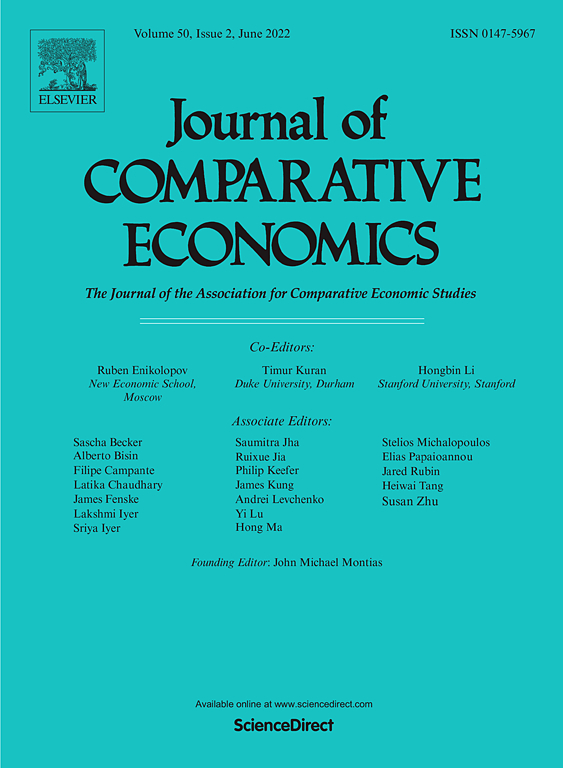
Sovereign Default Risk in the Euro-periphery and the Euro-candidate Countries
in: Journal of Comparative Economics, 2011
read publication
The Role of Uncertainty in the Euro Crisis - A Reconsideration of Liquidity Preference Theory
in: Journal of Post Keynesian Economics, 2013
Abstract
With the world financial crisis came the rediscovery of the active role fiscal policy could play in remedying the situation. More recently, the Euro Crisis, with its mounting funding costs facing governments of a number of Southern EU member states and Ireland, has called this strategy into question. Opposing this view, the main point of this contribution is to elaborate on the link between rising sovereign risk premia in the Eurozone and a major feature of the financial crisis - elevated uncertainty after the Lehman collapse. Theoretically, this link is developed with reference to Keynes' liquidity preference theory. The high explanatory power of rising uncertainty in financial markets and the detrimental effects of fiscal austerity on the evolution of sovereign risk spreads are demonstrated empirically by means of panel regressions and supplementary correlation analyses.

Evidence on the Effects of Inflation on Price Dispersion under Indexation
in: Empirical Economics, No. 1, 2012
Abstract
Distortionary effects of inflation on relative prices are the main argument for inflation stabilization in macro models with sticky prices. Under indexation of non-optimized prices, those models imply a nonlinear and dynamic impact of inflation on the cross-sectional price dispersion (relative price or inflation variability, RPV). Using US sectoral price data, we estimate such a relationship between inflation and RPV, also taking into account the endogeneity of inflation by using two- and three-stage least-squares and GMM techniques, which turns out to be relevant. We find an effect of (expected) inflation on RPV, and our results indicate that average (“trend”) inflation is important for the RPV-inflation relationship. Lagged inflation matters for indexation in the CPI data, but is not important empirically in the PPI data.

Macroeconomic Imbalances as Indicators for Debt Crises in Europe
in: Journal of Common Market Studies, No. 5, 2012
Abstract
European authorities and scholars published proposals on which indicators of macroeconomic imbalances might be used to uncover risks for the sustainability of public debt in the European Union. We test the ability of four proposed sets of indicators to send early-warnings of debt crises using a signals approach for the study of indicators and the construction of composite indicators. We find that a broad composite indicator has the highest predictive power. This fact still holds true if equal weights are used for the construction of the composite indicator in order to reflect the uncertainty about the origin of future crises.

Are Universal Banks Bad for Financial Stability? Germany During the World Financial Crisis
in: Quarterly Review of Economics and Finance, No. 2, 2012
Abstract
This case study explores the contribution of universal banking to financial stability in Germany during the recent financial crisis. Germany is a prototype for universal banking and has suffered from a rather small number of banking crises in the past. We review the banking literature and analyze the major institutional and regulatory features of the German financial system to establish a nexus between universal banking and stability.
Working Papers
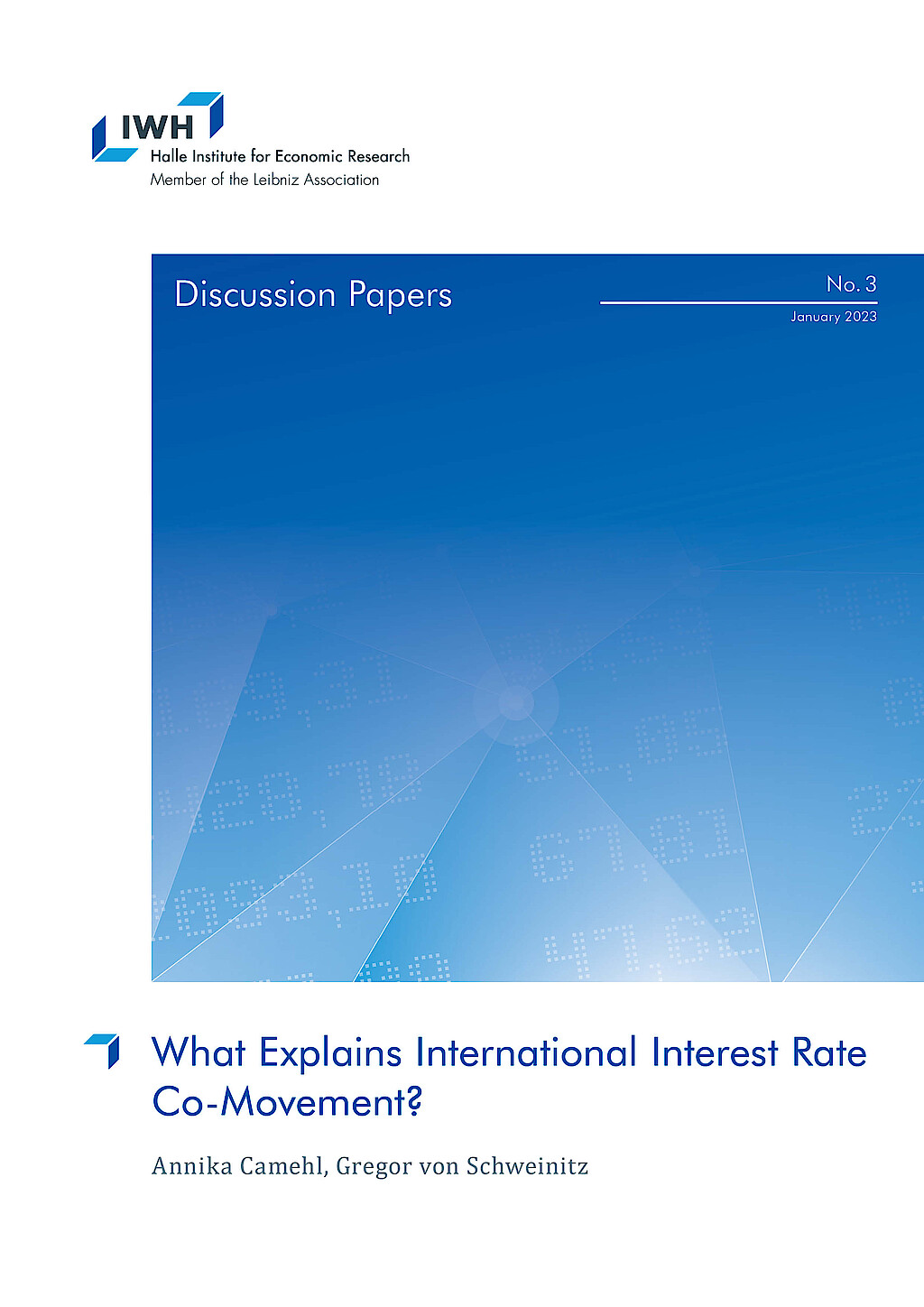
What Explains International Interest Rate Co-Movement?
in: IWH Discussion Papers, No. 3, 2023
Abstract
We show that global supply and demand shocks are important drivers of interest rate co-movement across seven advanced economies. Beyond that, local structural shocks transmit internationally via aggregate demand channels, and central banks react predominantly to domestic macroeconomic developments: unexpected monetary policy tightening decreases most foreign interest rates, while expansionary local supply and demand shocks increase them. To disentangle determinants of international interest rate co-movement, we use a Bayesian structural panel vector autoregressive model accounting for latent global supply and demand shocks. We identify country-specific structural shocks via informative prior distributions based on a standard theoretical multi-country open economy model.
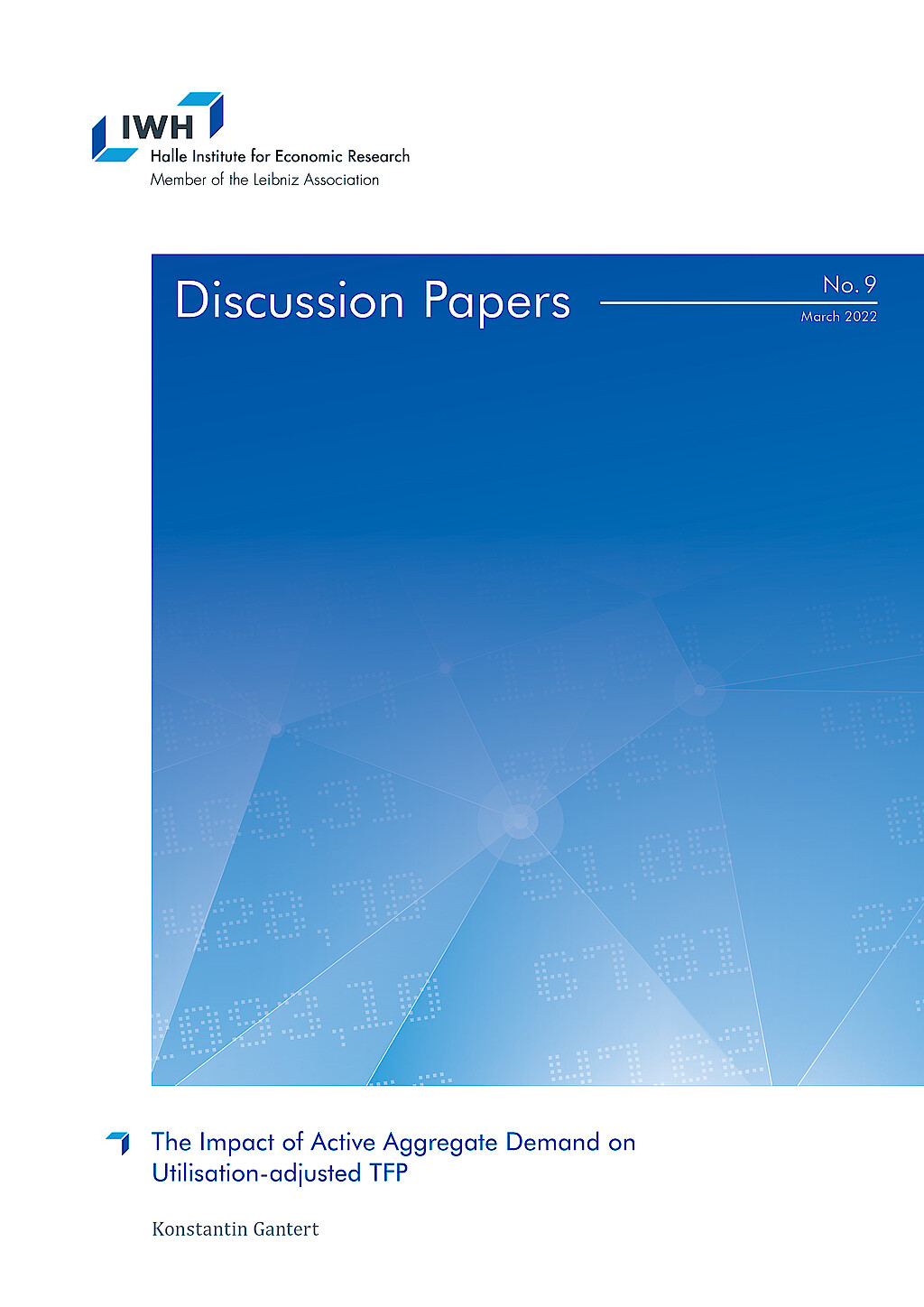
The Impact of Active Aggregate Demand on Utilisation-adjusted TFP
in: IWH Discussion Papers, No. 9, 2022
Abstract
Non-clearing goods markets are an important driver of capacity utilisation and total factor productivity (TFP). The trade-off between goods prices and household search effort is central to goods market matching and therefore drives TFP over the business cycle. In this paper, I develop a New-Keynesian DSGE model with capital utilisation, worker effort, and expand it with<i> goods market search-and-matching (SaM)</i> to model non-clearing goods markets. I conduct a horse-race between the different capacity utilisation channels using Bayesian estimation and capacity utilisation survey data. Models that include goods market SaM improve the data fit, while the capital utilisation and worker effort channels are rendered less important compared to the literature. It follows that TFP fluctuations increase for demand and goods market mismatch shocks, while they decrease for technology shocks. This pattern increases as goods market frictions increase and as prices become stickier. The paper shows the importance of non-clearing goods markets in explaining the difference between technology and TFP over the business cycle.
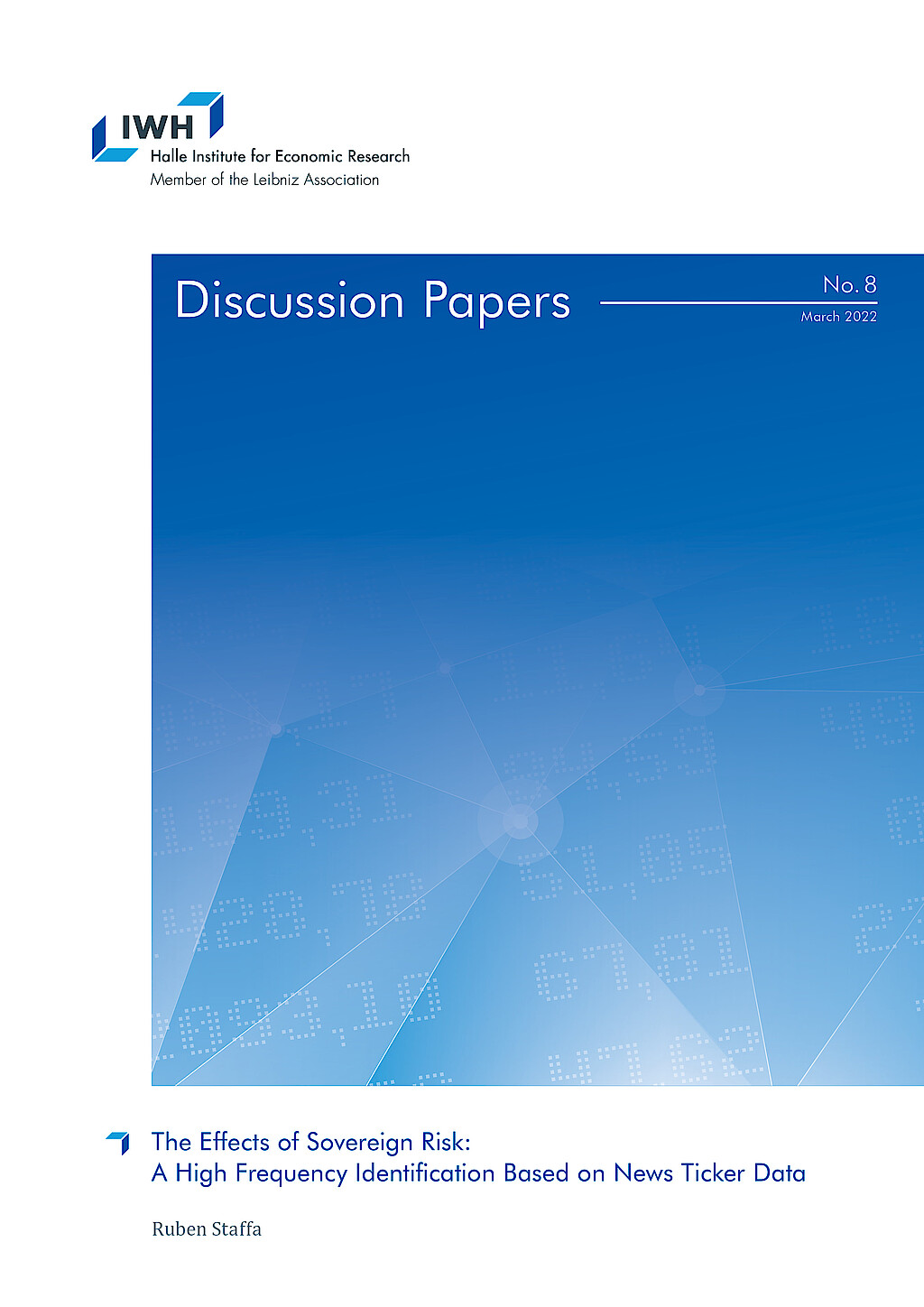
The Effects of Sovereign Risk: A High Frequency Identification Based on News Ticker Data
in: IWH Discussion Papers, No. 8, 2022
Abstract
This paper uses novel news ticker data to evaluate the effect of sovereign risk on economic and financial outcomes. The use of intraday news enables me to derive policy events and respective timestamps that potentially alter investors’ beliefs about a sovereign’s willingness to service its debt and thereby sovereign risk. Following the high frequency identification literature, in the tradition of Kuttner (2001) and Guerkaynak et al. (2005), associated variation in sovereign risk is then obtained by capturing bond price movements within narrowly defined time windows around the event time. I conduct the outlined identification for Italy since its large bond market and its frequent coverage in the news render it a suitable candidate country. Using the identified shocks in an instrumental variable local projection setting yields a strong instrument and robust results in line with theoretical predictions. I document a dampening effect of sovereign risk on output. Also, borrowing costs for the private sector increase and inflation rises in response to higher sovereign risk.
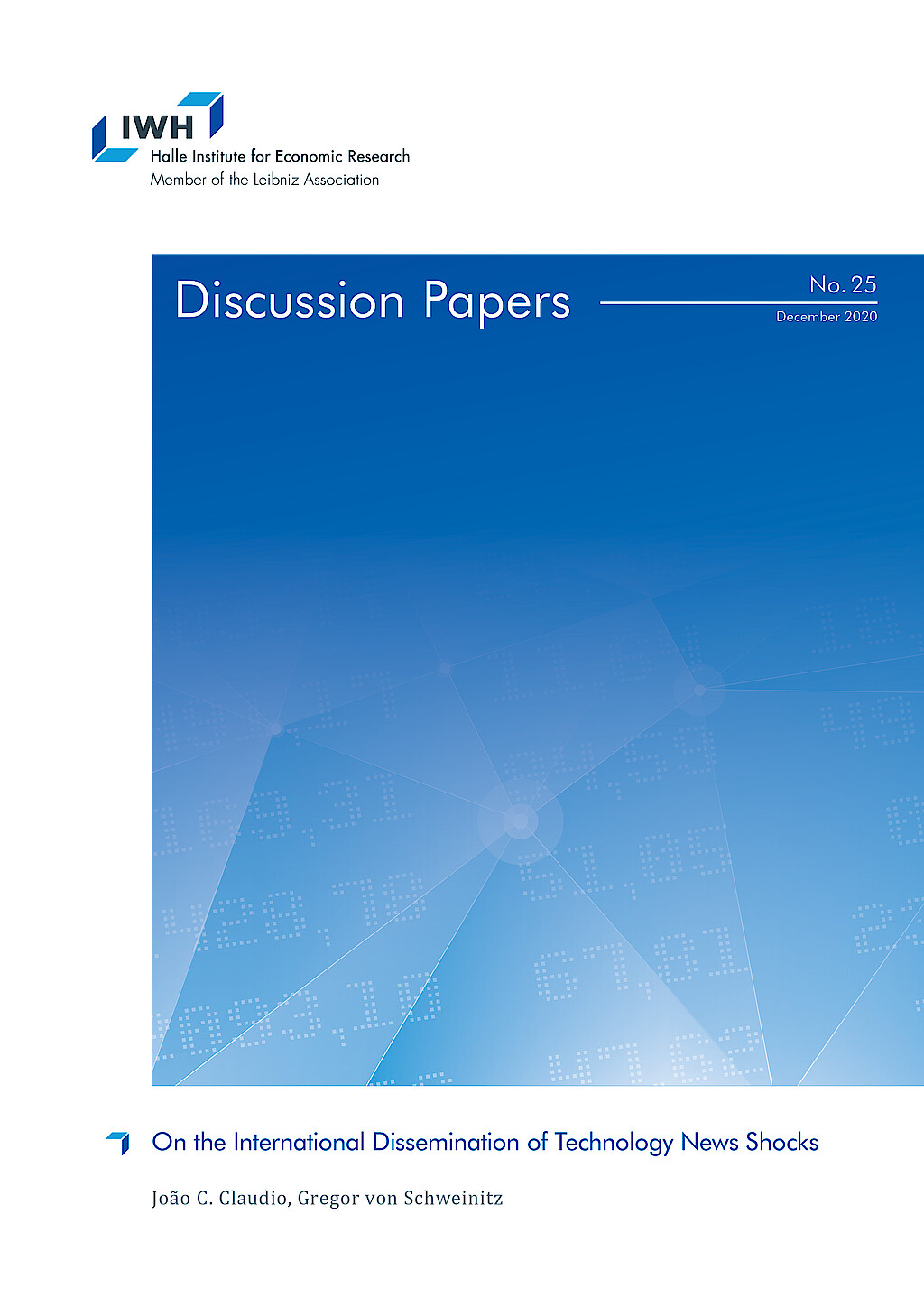
On the International Dissemination of Technology News Shocks
in: IWH Discussion Papers, No. 25, 2020
Abstract
This paper investigates the propagation of technology news shocks within and across industrialised economies. We construct quarterly utilisation-adjusted total factor productivity (TFP) for thirteen OECD countries. Based on country-specific structural vector autoregressions (VARs), we document that (i) the identified technology news shocks induce a quite homogeneous response pattern of key macroeconomic variables in each country; and (ii) the identified technology news shock processes display a significant degree of correlation across several countries. Contrary to conventional wisdom, we find that the US are only one of many different sources of technological innovations diffusing across advanced economies. Technology news propagate through the endogenous reaction of monetary policy and via trade-related variables. That is, our results imply that financial markets and trade are key channels for the dissemination of technology.
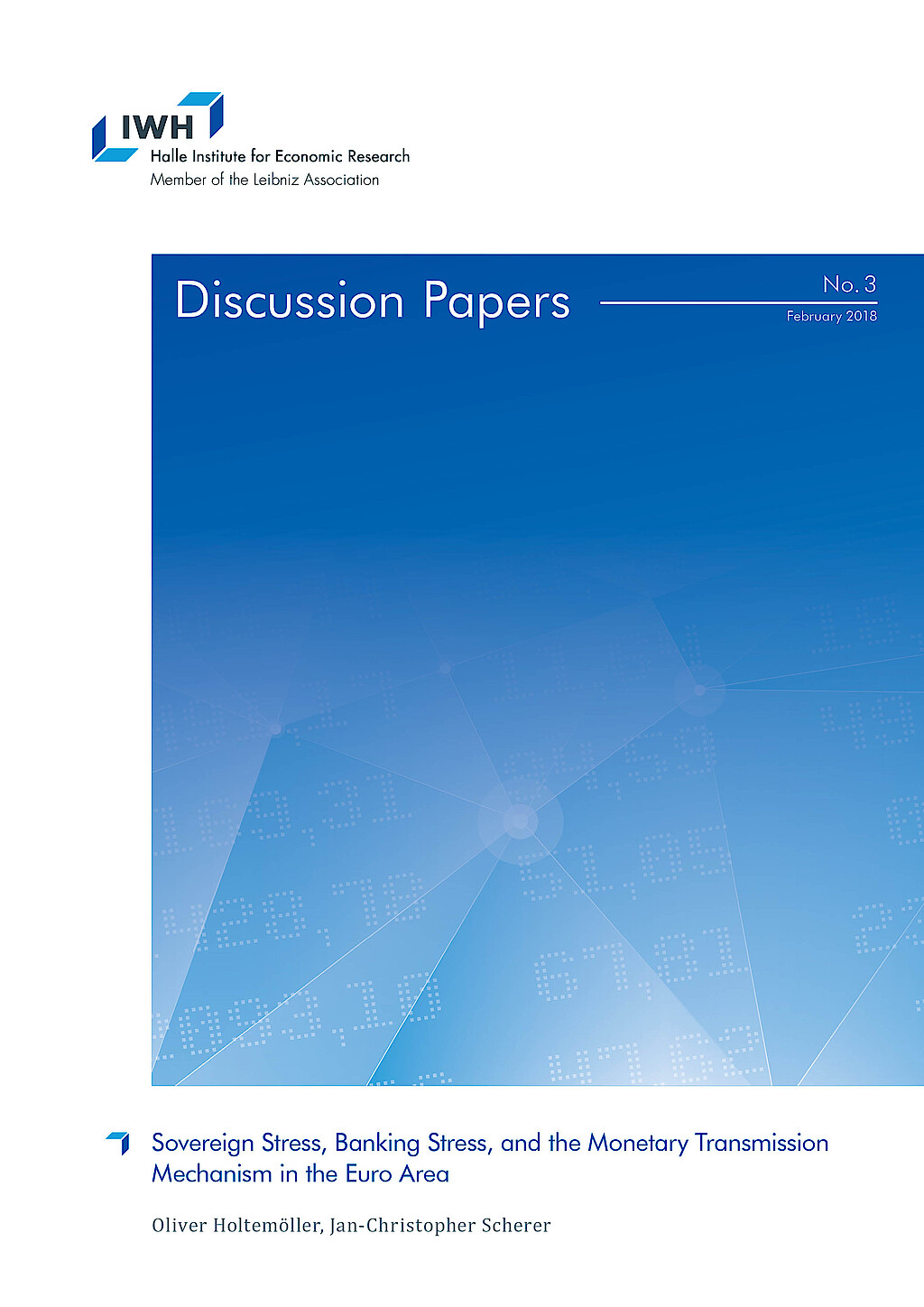
Sovereign Stress, Banking Stress, and the Monetary Transmission Mechanism in the Euro Area
in: IWH Discussion Papers, No. 3, 2018
Abstract
In this paper, we investigate to what extent sovereign stress and banking stress have contributed to the increase in the level and in the heterogeneity of nonfinancial firms’ refinancing costs in the Euro area during the European debt crisis and how they did affect the monetary transmission mechanism. We identify the increasing effect of government bond yield spreads (sovereign stress) and the share of non-performing loans (banking stress) on firms’ financing costs using an instrumental-variable approach. Moreover, we estimate both sources of stress to have significantly impaired the monetary transmission mechanism during the European debt crisis.














